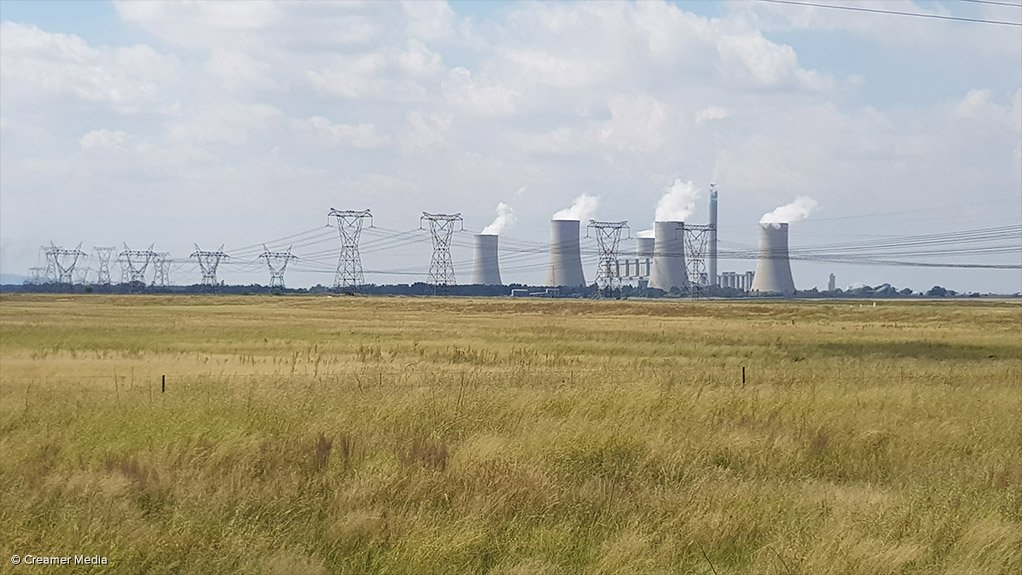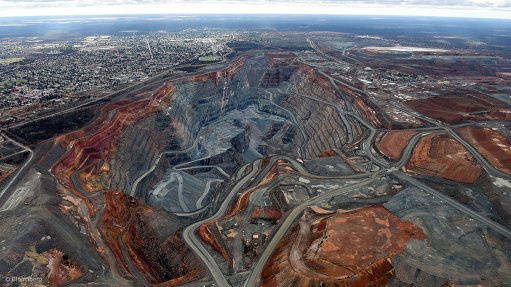Eskom’s financial woes not abating in sync with load-shedding risk
The cautiously optimistic prognosis provided by Eskom on the outlook for electricity supply for the coming nine months has been more than offset by the State-owned utility’s disturbing assessment of its financial predicament.
The group, which implemented ten days of confidence-sapping power cuts from March 14 to 23, is forecasting that it will be able to avoid load-shedding during the high-demand winter months, notwithstanding a plan to continue with relatively high levels of maintenance during the period.
The improved supply outlook is premised on the return of two units at Kriel and Matla in April and May respectively, the commercialisation of two more units at the Medupi and Kusile projects, as well as the shoring up of diesel stocks, which are used to power its open cycle gas turbines.
Public Enterprises Minister Pravin Gordhan said during a briefing at the Lethabo power station on Wednesday that, at worst, there could be a maximum of 26 days of stage one (1 000 MW) load-shedding during the winter months from May to August. He was optimistic, however, that a roadmap was in place to avoid such cuts entirely.
During the March load-shedding episode Eskom resorted, at points, to stage four cuts of over 4 000 MW as unplanned breakdowns across its coal fleet surged to over 13 000 MW and the deadly cyclone Idai took down transmission lines used to import power from Cahora Bassa, in Mozambique.
The mood on the financial front was far less upbeat, however, with chairperson Jabu Mabuza indicating that neither the recent tariff hike of 13.8%, nor the National Treasury commitment to inject R23-billion-a-year into the utility for at least three years (possibly ten) were sufficient to bring its debt-laden financial statements back into balance.
Mabuza revealed that the utility faces a R250-billion hole in its finances even after the tariff increases announced by the National Energy Regulator of South Africa (Nersa) and the R69-billion National Treasury injection.
Eskom Sustainability Task Team chairperson Professor Anton Eberhard said Eskom’s problem boiled down to the fact that it was not generating enough cash to cover its operational expenses and meet its rising debt-servicing obligations.
Officially, Eskom’s debt stands at R420-billion, but it has reportedly risen materially since that figure was placed into the public domain. In addition, the new debt it is taking on is more expensive than the debt being retired, owing to the utility’s junk credit rating, which has fallen seven notches over the past ten years.
Eberhard said that, while tariff-driven revenue increases and cost compression efforts were essential, they were unlikely to be sufficient to extricate Eskom from its current financial predicament.
He revealed that the Eskom Sustainability Task Team, which had already proposed that Eskom be unbundled into three separate businesses of generation, transmission and distribution, would, in its final report, make a number of financing proposals to provide debt relief to Eskom.
The report will be published by the end of April.
“Some new kind of innovative financing facility is something that the team is looking at – a blended finance facility that could include some concessionary component, maybe linked to climate financing, with other financing. This could actually make a huge difference and see Eskom returning to a more sustainable financial position,” Eberhard said.
Gordhan refused to be drawn on whether the Public Investment Corporation would be called on to provide the additional financial relief.
“The approach we have adopted is to, firstly, sort out any immediate liquidity challenges that Eskom has. Secondly, now that we are in the new financial year, there needs to be some work done by the National Treasury in order to get the R23-billion allocation moving in terms of cash flow. Thirdly, it’s a question of the debt and all I want to say about that . . . is that a variety of options are before us and serious consideration is being given to all of them at the highest level in government. Once we are ready and have finessed the package we will let you know, either before the elections, or soon thereafter depending on how quickly we can resolve some of these issues.”
No Turning Back on Medupi and Kusile
Meanwhile, Mabuza reported that the utility would not seek to save costs by pulling back from the completion of the Medupi and Kusile projects, which are at least two times over budget and years behind schedule.
He said an internal cost-benefit analysis showed that it was cheaper for Eskom to complete the projects, rather than to mothball the remaining units and pay contractor penalties.
Medupi was 94% completed and Kusile 89% completed, CEO Phakamani Hadede said.
Under Eskom’s revised schedule the last Medupi unit is expected to be introduced into the network in March 2020, while the final Kusile unit is expected to be commercialised in September 2022.
Comments
Press Office
Announcements
What's On
Subscribe to improve your user experience...
Option 1 (equivalent of R125 a month):
Receive a weekly copy of Creamer Media's Engineering News & Mining Weekly magazine
(print copy for those in South Africa and e-magazine for those outside of South Africa)
Receive daily email newsletters
Access to full search results
Access archive of magazine back copies
Access to Projects in Progress
Access to ONE Research Report of your choice in PDF format
Option 2 (equivalent of R375 a month):
All benefits from Option 1
PLUS
Access to Creamer Media's Research Channel Africa for ALL Research Reports, in PDF format, on various industrial and mining sectors
including Electricity; Water; Energy Transition; Hydrogen; Roads, Rail and Ports; Coal; Gold; Platinum; Battery Metals; etc.
Already a subscriber?
Forgotten your password?
Receive weekly copy of Creamer Media's Engineering News & Mining Weekly magazine (print copy for those in South Africa and e-magazine for those outside of South Africa)
➕
Recieve daily email newsletters
➕
Access to full search results
➕
Access archive of magazine back copies
➕
Access to Projects in Progress
➕
Access to ONE Research Report of your choice in PDF format
RESEARCH CHANNEL AFRICA
R4500 (equivalent of R375 a month)
SUBSCRIBEAll benefits from Option 1
➕
Access to Creamer Media's Research Channel Africa for ALL Research Reports on various industrial and mining sectors, in PDF format, including on:
Electricity
➕
Water
➕
Energy Transition
➕
Hydrogen
➕
Roads, Rail and Ports
➕
Coal
➕
Gold
➕
Platinum
➕
Battery Metals
➕
etc.
Receive all benefits from Option 1 or Option 2 delivered to numerous people at your company
➕
Multiple User names and Passwords for simultaneous log-ins
➕
Intranet integration access to all in your organisation




















